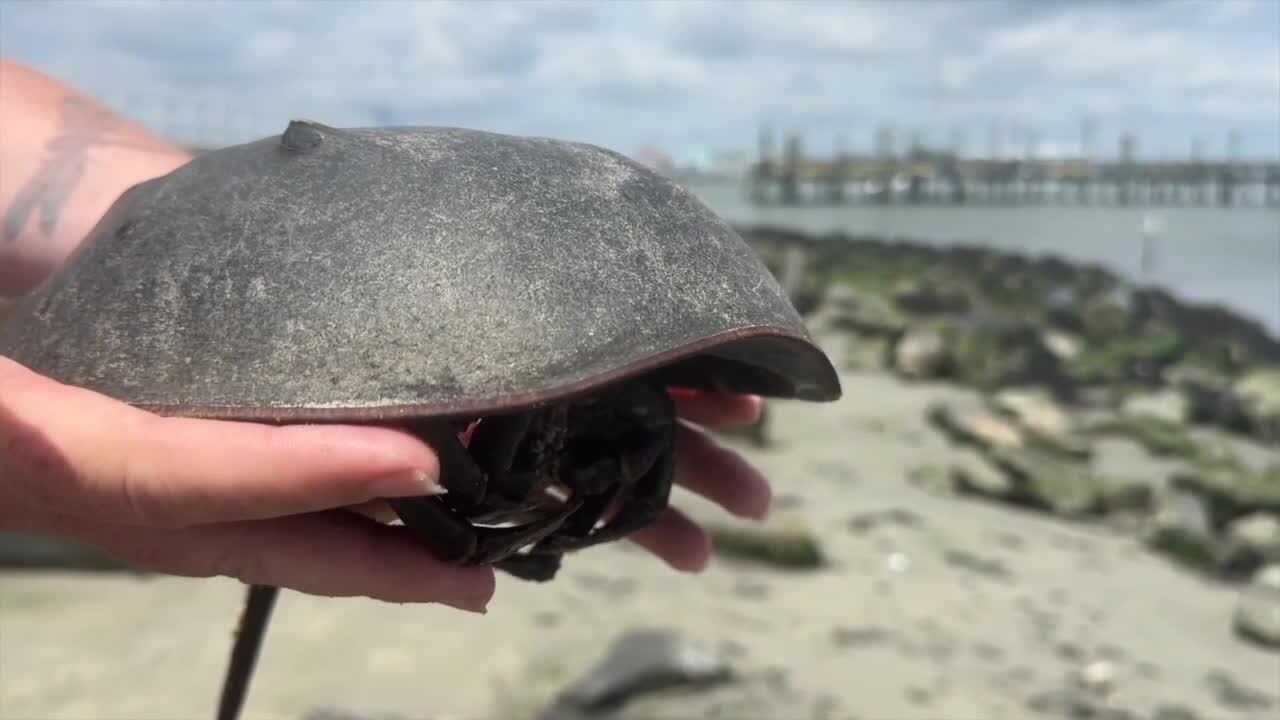OCEAN CITY, Md. — It's low-tide and a Maryland nonprofit group is on the hunt for some prehistoric species in need of your help.

WATCH: MD volunteers rescue ancient horseshoe crabs during vulnerable mating season
And these living fossils, straight out of the Paleozoic era may look intimidating but even an ancient arthropod needs a helping hand during mating season.
“They're closer to a spider than they are to a crab that you might also see like a Maryland crab,” said Ken Koroknay, a volunteer with the Maryland Coastal Bays Program.
Horseshoe crabs have roamed the Earth for 445 million years; they can be a sight straight out of some people's nightmares.
“I think that the average person that spends time on the beach might see one of these things crawling around and feel like it's some type of hideous creature,” said James Logsdon, another volunteer with the Maryland Coastal Bays Program.
Horseshoe crabs aren't just important to these volunteers and the Ocean City community, they're also vital to the medical community. Horseshoe crabs have a protein in their blood, Limulus Amebocyte Lysate (LAL), which is used to test for endotoxins and bacterial contamination in vaccines, injectable drugs and medical devices.
"Their blood is incredibly important for the medical profession as far as testing lab equipment and medicines that could be dangerous if their blood contains something," Logsdon said.
From May to August, during the horseshoe crab's mating season, along Maryland's eastern shoreline visitors can see these creatures make their way to shore during low tide.
As their physiology has changed little during the millions of years they have lived on this planet, getting stuck or flipped over can mean life or death.
So, volunteers lend a helping hand.
“Are they gonna make it to the next high tide? Perhaps, but if you know for sure they're gonna make it if you're able to pick them up at low tide and get them past the rock pile out into the into the sand into the surf, so you know they're going to survive," Koroknay said.
The organization of approximately 20 members visits four different sites every day at low tide to check on the horseshoe crabs; the task can take from 15 minutes to multiple hours.
“We also do counting—counting of rescues, counting of spawning pairs, and counting of dead crabs—and we collect that data for Maryland coastal bays. And they provide it to Maryland DNR Department of Natural Resources,” Koroknay said.
The best part of this job for volunteers like Marnien O'Brien is helping these prehistoric critters continue their journey—hopefully for another few hundred million years.
“We're helping to rescue them so that they can continue their cycle,” O'Brien said. “They don't know that we're providing them this help... It's a gift to me that I get to do this every year, and I look forward to it.”
If you see a horseshoe crab flipped on its back, you can put a hand underneath it and lightly flip it back over. Volunteers say, just don't touch the horseshoe crab's tail, because they need it to swim.



